Green apples: the best varieties for the garden
One of the most beloved and useful fruits in humans is apples... Since ancient times, they have been revered among people as prolonging life, rejuvenating.
The peel of green apples contains chlorophyll, which determines their color. It is he who affects the stimulation of immunity, increasing the production of red blood cells in the human blood. The nutrients from green apples quickly saturate the body, relieving hunger. And for diabetics, these particular varieties of fruit are useful, since they have less sugar than others.
Content:
- Summer varieties of green apples
- The best autumn varieties
- Winter types of green apples
- Dwarf varieties of green apples
- Rules for growing and caring for green apple varieties
Summer varieties of green apples
How good it is to refresh yourself with a juicy apple in the heat of August. Summer varieties give us this opportunity:
- Among the most famous varieties is Papirovka, which is distinguished by high yield and winter hardiness. The fruits of the variety have a greenish tone with a tinge of yellowness. Like all early varieties, the skin of an apple is thin, underneath is a juicy pulp that has tenderness. Fruit ripening on an apple tree occurs from July to August. Collect them immediately, otherwise, falling to the ground, they will be severely damaged. To taste Papirovka slightly sour with a lot of pectins. Fruits are used for marshmallows, jams, compotes. Fresh they are also good.
- Similar to Papirovka variety White filling, but the color of its fruits has a greenish-yellow tone. This type of popular apple was bred in the Baltic orchards, but won the hearts of many gardeners in other areas. The flesh of the fruit is pleasant: tender, loose, coarse-grained. Apples have a faint aroma. Overripe fruit leads to lack of juiciness, they become tasteless. The fruits are useful for making juices, jams, jam. But they are not suitable for compotes.
- The Early Geneva variety with fruits of a green-yellow tone is considered to be super early. Already in the first year after planting, the tree bears fruits that cannot be stored for a long time, but have a wonderful sweet and sour taste. The tree gets along well with other varieties, being a good pollinator.
Summer varieties of green apples are rare; they prefer later ripening times.
The best autumn varieties
The most popular autumn varieties of green apples:
- The undisputed leader of the autumn varieties is Antonovka. In September, these fragrant greenish fruits with a thick short stalk are plucked. After a month of storage, they begin to turn yellow and become edible. The fruit tastes sweet and sour.
- In early autumn, fruits with a greenish pulp of the Dachnoe variety are harvested. Apples weigh from one hundred to two hundred grams each. Gardeners are attracted by the versatility of using the variety. The fruits can be stored for no more than two months.
- In mid-September - early October, Anis Sverdlovsky ripens. Small apples are green with a blush on one side. The pulp of the fruit is juicy and white. They taste sweet with anise flavor. This species has good winter hardiness.
- Greenish apples with a speckled blush are characteristic of Cinnamon New. The apple tree begins to bear fruit in the seventh year of life, but then it gives crops irregularly. Apples are stored until January.The positive quality of this species is the tenderness of the pulp, a pleasant sweet-sour taste, a good presentation of the fruit.
Green apple varieties ripen better at a later date.
Winter types of green apples
Late-ripening green apple varieties are best known for:
- The Granny Smith variety is characterized by light green fruits weighing up to three hundred grams. The dense sour apple pulp is juicy and low in sugar. The homeland of the variety is Australia, where breeders crossed the domestic species with the wild French. Granny Smith prefers a temperate climate with mild winters. The juiciness of the fruit depends on the dryness of the summer. They are suitable for making healthy juices. Apples are advised to be used to cleanse the body during fasting days.
- The Moskovskoye variety is universal later, which begins to bear fruit in the fifth year of life with the formation of large green fruits. You can store them until spring, and then they delight with juiciness, pleasant sweet and sour taste.
- Sinap Orlovsky is winter-hardy, resistant to scab. The average yield from one tree is twenty to forty kilograms, which directly depends on the weather conditions. Slightly oblong green-yellowish fruits, when they reach ripeness, are covered with a faint blush. Juicy green-creamy pulp has a sweet and sour taste. Fruits with high flavoring properties can be preserved until May.
- All winter they enjoy Kutuzovets apples, which are harvested at the end of September. The fruits of the variety are characterized by a round shape, a large mass of 160 grams. They have a sweet and sour taste of juicy white pulp. A fruit tree grows in temperate latitudes, adapted to severe frosts. Up to 30 kilograms of delicious apples can be harvested from one tree.
- The Green Leaves variety is attracted by the correct form of green fruits, their moderate acidity with a small sugar content. The yellow pulp is juicy and dense. The fruits lend themselves to long storage and transportation. They are used to produce compotes, jam, marshmallow.
- Linda's large green fruits have a slight blush. It is distinguished by a greenish pulp with a slight sourness and sweetness, since the fruits contain a lot of vitamin C and ten percent sugar. Fruits are kept fresh until March.
- The oldest variety from Poland - Koštel, which enters the season of fruiting only in the tenth year of life, is liked by many for its pleasant juiciness. But then the tree bears fruit abundantly every second year. It is scab resistant, winter hardy enough. Medium-weight fruits are characterized by sweet firm pulp. The fruits retain their fresh taste until March, they are perfectly suitable for transportation.
Green apples retain their qualities better during the winter, so there are more winter varieties of this type.
Dwarf varieties of green apples
The main property of dwarf apple trees is their resistance to frost:
- The low-growing Bratchud variety was bred by breeders of the South Urals. Begins to bear fruit in the third year after planting. Apples are characterized by a greenish skin, sweet and sour white pulp, little juicy. The harvest of fruits is stored for three months, but when the air is dry, their taste decreases. The variety is suitable for making compotes, jam.
- The white Sun is characterized by round-shaped fruits of a yellow-green tone. Productivity depends on the quality of apple care. The fruits are good both fresh and canned.
- Bush crumb tends to be resistant to cold weather. The species belongs to the middle-summer. Round fruits have a juicy white pulp, weighing one to two hundred grams. Sweet and sour fruits are used for processing, preparation of canned food.
- Sour apples with a small amount of sugar are harvested in the fifth year of the tree's growth. Slightly flattened fruits with green flesh ripen at the end of summer. Their keeping quality is low; it is better to process apples into compotes and jams.
Rules for growing and caring for green apple varieties
A fruit tree, from planting to picking green apples from it, must live for several years in conditions created especially for it:
- For apple trees, loamy soils with a lot of air are best. If you have clay on the site, then you need to add a little peat, coarse river sand to it. For sandy soil - peat, clay, humus.
- Trees are afraid of groundwater located close to the surface of the garden plot.
- The optimal planting time for apple trees is from September 20 to October 15, and in the spring from April 20.
- At the bottom of the pit for planting, drainage is laid out in the form of shards of dishes, cans, then humus, mineral and organic fertilizers - a glass of superphosphate, potassium sulfate, a liter jar wood ash and three buckets of rotted manure. Then the pit filled to the brim with humus is ready for planting a seedling.
- A young tree is tied with twine to a peg during planting. The land around is carefully tamped and watered, sparing no water. Cover the root circle well with peat or earth mulch.
Caring for an apple tree consists in proper watering with loosening the soil in a dry summer. At the end of April, several buckets of manure or five hundred grams of urea are brought under the tree.
At the beginning of flowering, another top dressing is carried out from added to the slurry (two buckets) or solution chicken droppings (ten liters) kilograms of superphosphates, eight hundred grams of potassium sulfate. The third time is fed after the apple trees have faded. A kilogram of nitrophoska, twenty grams of dry sodium humate are added to a two-hundred-liter barrel of water. Fertilizer is last applied after harvest before preparing the plant for winter.
In a rainy summer, fertilizers can be applied dry, scattering them in the area of the root circle.
Pruning bushes are carried out with the aim of destroying sick and damaged shoots. During the operation, it is necessary to ensure that the central main branch is higher than the skeletal shoots, which should be located further from each other. Proper care will allow the apple tree to delight you with high yields of healthy green fruits.
More information can be found in the video:




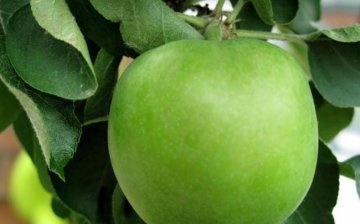
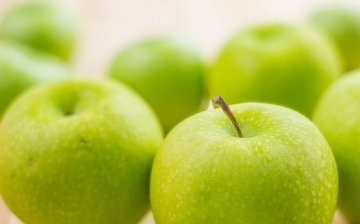
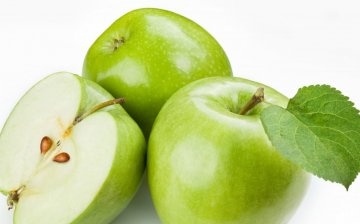

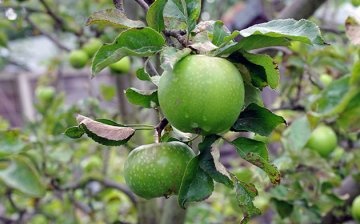






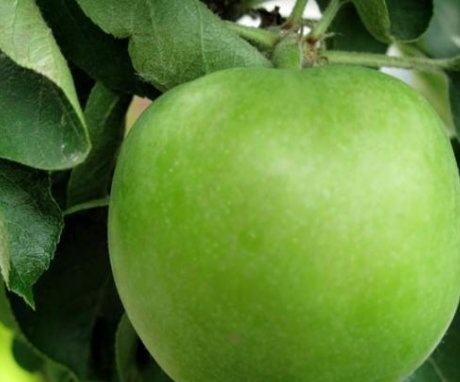
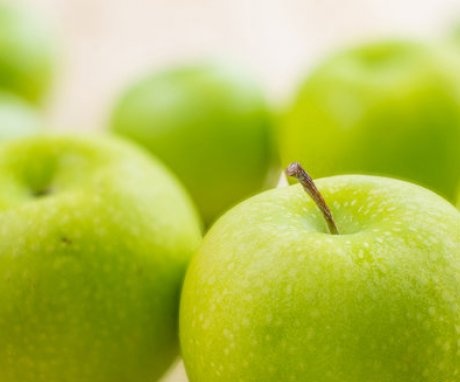
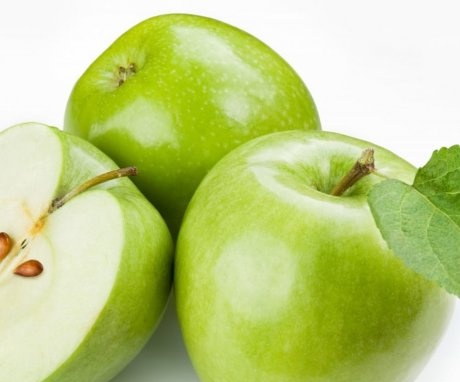
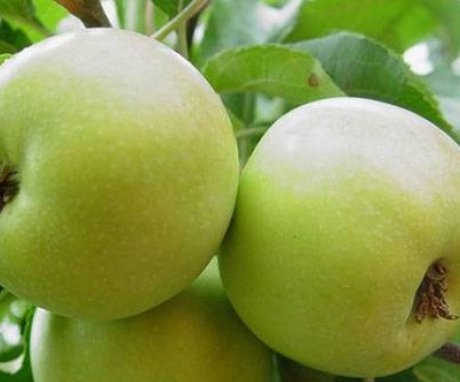
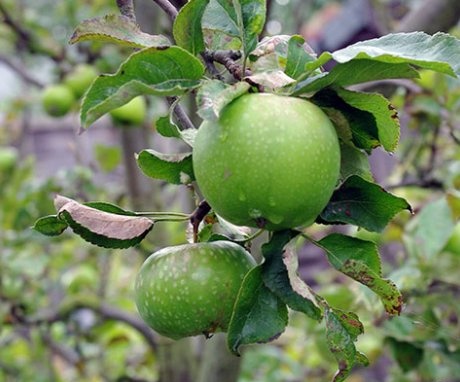
I love white filling very much. These are the most anticipated apples, as they are the first to appear after a long winter. And also Simirenko - although the apple is green, but not tough. In winter, you want just such a neutral and delicate variety of apples.